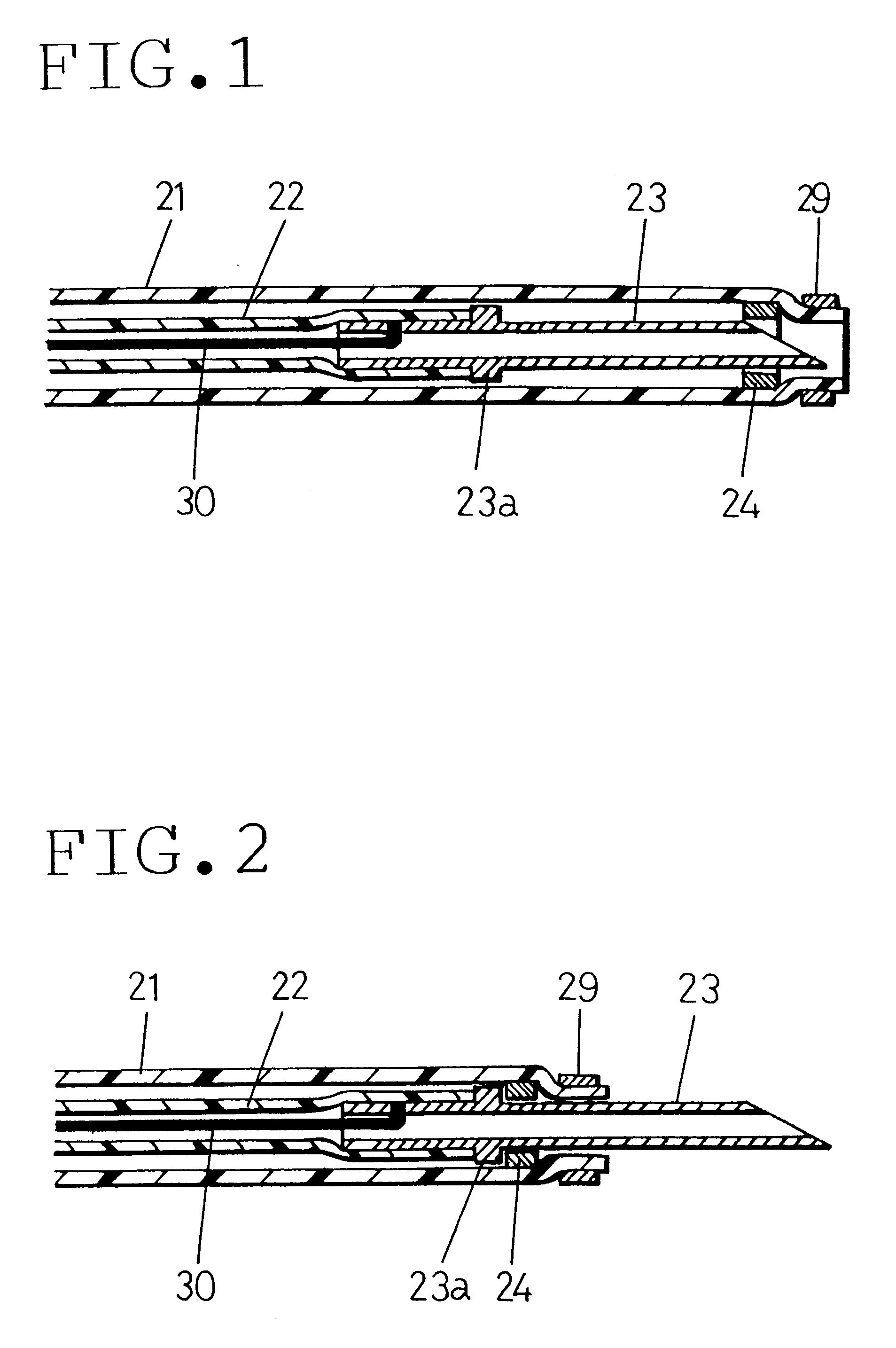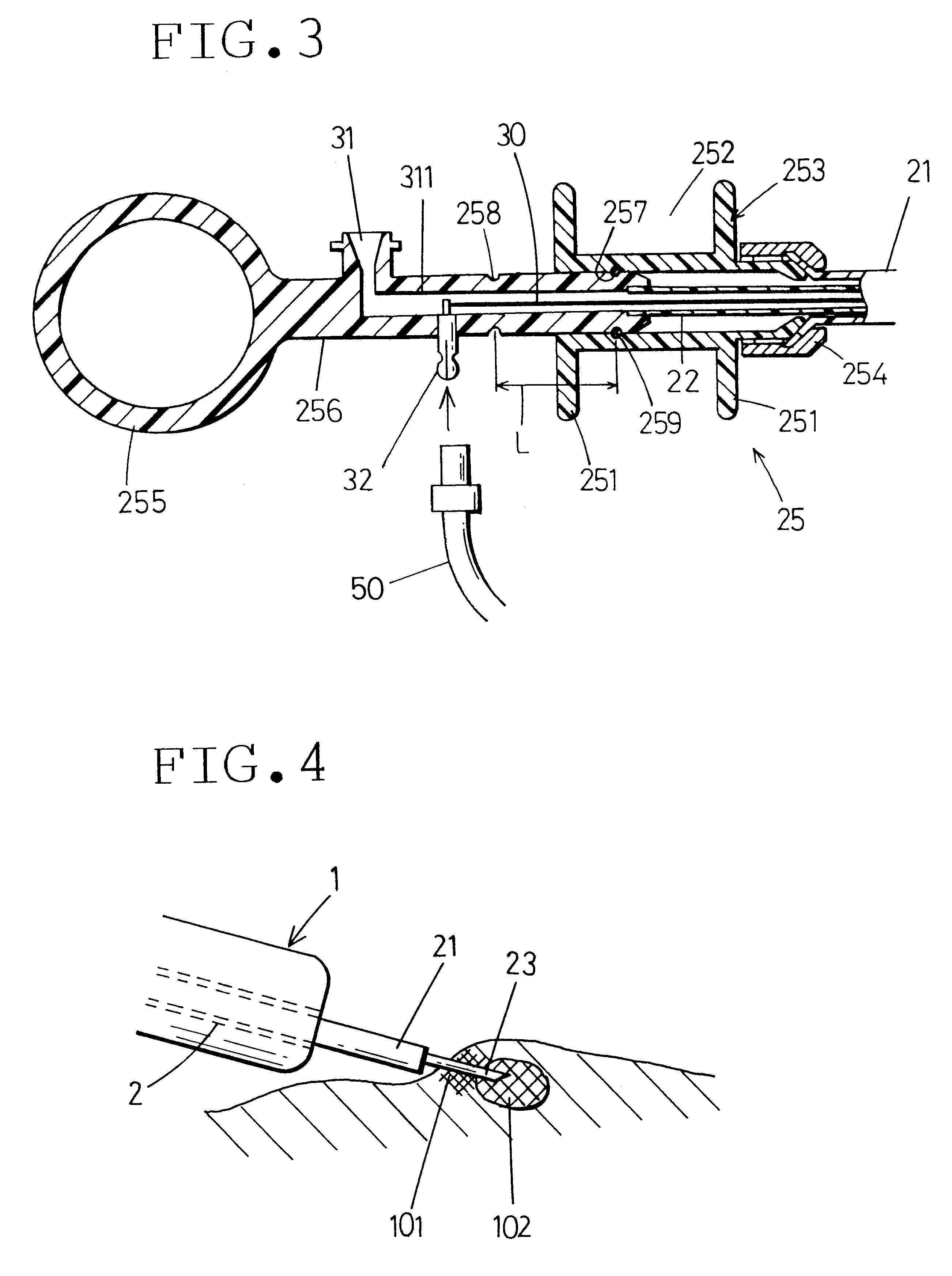Treating instrument for endoscope
a technology for treating instruments and endoscopes, applied in the field of treating instruments, can solve problems such as bleeding from the cut end of the mucous membrane surface, bleeding from the hole opening after the needle, and bleeding from the hole itsel
- Summary
- Abstract
- Description
- Claims
- Application Information
AI Technical Summary
Problems solved by technology
Method used
Image
Examples
second embodiment
FIG. 5 shows a syringe for an endoscope according to the present invention. The fluid transfer tube 22 and the needle 23 are integrally formed from a thin tube of an electrically conductive metallic material such as a titanium alloy, a stainless steel or a super elastic alloy, e.g. a nickel-titanium alloy. The fluid transfer tube 22 per se is used as an electrically conductive material that carries a high-frequency electric current, thereby simplifying the structure.
The fluid transfer tube 22 has a diameter of the order of from 1 millimeter to 2 millimeters. Therefore, reducing the wall thickness of the fluid transfer tube 22 makes it possible to obtain flexibility that enables the fluid transfer tube 22 to be removably inserted into the instrument-inserting channel of the endoscope. The proximal end of the fluid transfer tube 22 is connected directly to the connecting terminal 32. The arrangement of the rest of the second embodiment is the same as that in the first embodiment.
third embodiment
FIGS. 6 and 7 show a syringe for an endoscope according to the present invention. FIG. 6 shows the syringe in a state where a needle 23 projects from the distal end of a sheath 11. FIG. 7 shows the syringe in a state where the needle 23 is withdrawn into the sheath 11.
The sheath 11 in this embodiment has a coil pipe 11a formed by helically close-winding an electrically conductive metal wire, e.g. a stainless steel wire, with a uniform diameter. The outer surface of the coil pipe 11a is covered with a flexible electrically insulating tube 11b such as a tetrafluoroethylene resin tube.
A high-frequency electrode 12 is secured to the distal end of the sheath 11 in such a manner that the electrode 12 is exposed at the whole distal end surface of the sheath 11. The high-frequency electrode 12 is made of an electrically conductive metal, e.g. a stainless steel. The high-frequency electrode 12 is connected to the distal end portion of the coil pipe 11a by silver brazing or soldering. Thus, t...
PUM
 Login to View More
Login to View More Abstract
Description
Claims
Application Information
 Login to View More
Login to View More - R&D
- Intellectual Property
- Life Sciences
- Materials
- Tech Scout
- Unparalleled Data Quality
- Higher Quality Content
- 60% Fewer Hallucinations
Browse by: Latest US Patents, China's latest patents, Technical Efficacy Thesaurus, Application Domain, Technology Topic, Popular Technical Reports.
© 2025 PatSnap. All rights reserved.Legal|Privacy policy|Modern Slavery Act Transparency Statement|Sitemap|About US| Contact US: help@patsnap.com



